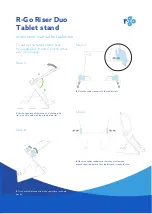
Thin Door/Window Contact
2GIG-DW11-345
Operating Instructions
The 2GIG-DW11-345 is a Thin Door/Window Contact that can be installed
on doors, windows, and many other objects that open and close. The
sensor transmits signals to the control panel when a magnet mounted near
the sensor is moved away from or closer to the sensor. The sensor has an
external input that accepts N/C dry contact devices. The sensor is also
equipped with a cover tamper for additional security.
Installation & Mounting Guidelines
Programming
Testing
Figure 1
Use the following guidelines for internal switch usage:
Access hole for
external input
Screw
mounting
features
Access hole for
external input
Tamper
switch
Figure 2
Figure 3
To mount the sensor, do the following:
To use the external input:
Mount the sensor on the door frame and the magnet on the door. If the sensor is used on
double doors, mount the sensor on the least-used door and the magnet on the most-used
door.
If possible, locate sensors within 100 ft (30 m) of the panel. While a transmitter may have a
range of 350 ft (106 m) or more out in the open, the environment at the installation site can
have a significant effect on transmitter range. Sometimes a change in sensor orientation can
help overcome adverse wireless conditions.
Make sure the alignment arrow on the magnet points to the alignment mark on the sensor
(see Figure 1).
Place sensors at least 4.7 in (12 mm) above the floor to avoid damaging them.
Avoid mounting sensors in areas where they will be exposed to moisture or where the sensor
operating temperature range of 32 to 120°F (0 to 49°C) will be exceeded.
Use spacers (not included) to keep sensors and magnets away from metal or metallic
surfaces such as foil wallpaper.
Avoid mounting sensors in areas with a large quantity of metal or electrical wiring, such as a
furnace or utility room.
1
2
3
4
5
6
7
Repeat above instructions for mounting.
Drill hole through access hole, if needed (see Figure 2).
Plug two-pin connector Into J1 (see Figure 3).
Connect wire to N/C dry contact device.
1
2
3
4
To remove the sensor cover, use your finger to press the tab on the end of the case;
this will disengage the clip holding the cover to the base.
Set the panel to sensor learning mode.
Press and release the tamper switch (SW1) on the sensor until the panel responds
(see Figure 3).
Replace the base of the sensor.
Exit program mode.
1
2
3
4
5
Put the control panel into sensor test mode.
Hold the magnet next to the removable cap on the sensor and then pull the magnet away from
the sensor.
Listen for siren or keypad beeps to determine appropriate response (refer to the control panel
installation instructions).
Exit sensor test mode.
1
2
3
4
Place the base of the sensor in the desired location and secure with included screws (see
Figure 2).
When mounting the magnet, line up the arrow on the magnet with the middle line on one
side of the sensor (see Figure 1). Mount the magnet no more than 0.4 in (1 mm) away from
the sensor. Be sure to secure the magnet with adhesive.
1
2
The following steps describe general guidelines for programming (learning) the sensor
into the alarm control panel memory. For more details, refer to the 2GIG Installation &
Programming Instructions.
Battery
Pull Tab
Before mounting the sensor, verify that the sensor mounting location provides good
RF communication to the panel. To verify, do the following:
Note: It is recommended that a system test be performed per the Operation & User's Guide at least once a year.




















